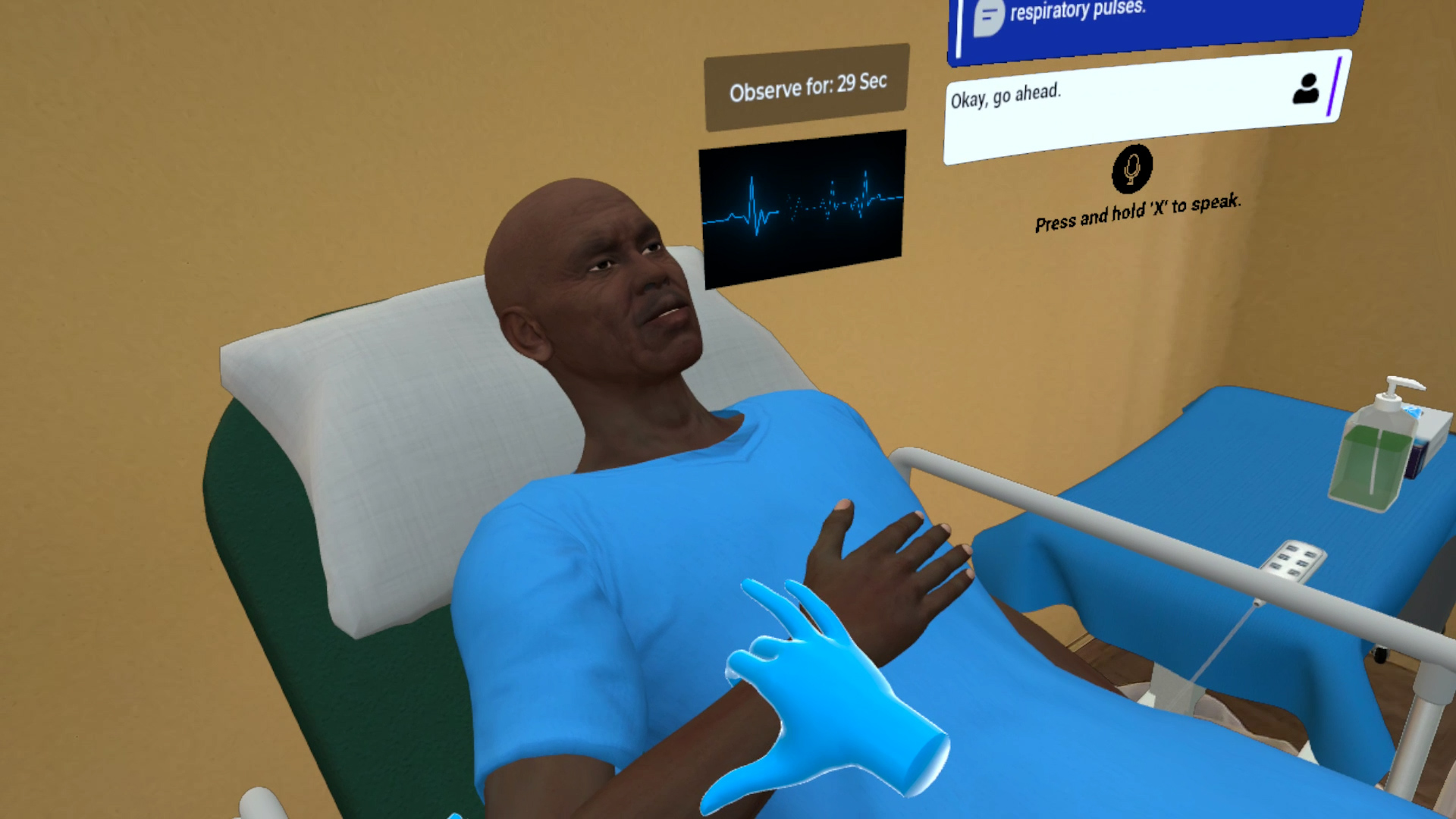Respiratory Function Assessment
Fifty-one-year-old Henry Joseph has been experiencing shortness of breath since the past two days. Along with that he has also been experiencing a fluttering feeling in his chest and some swelling in his legs. Henry has come to the emergency room for a checkup.
This VR simulation for Respiratory Function Assessment is designed to provide healthcare practitioners practice in performing the procedure in a controlled environment with a virtual patient. With both training and assessment modes, learners can perform the procedure and assess themselves on their performance.
- Assess respirations and chest movements using standard techniques
- Listening to breath sounds at the standard auscultation sites on the anterior and posterior chest wall
- Listening to abnormal breath sounds at the standard auscultation sites on the anterior chest wall
- Educate the patient on proper aftercare instructions
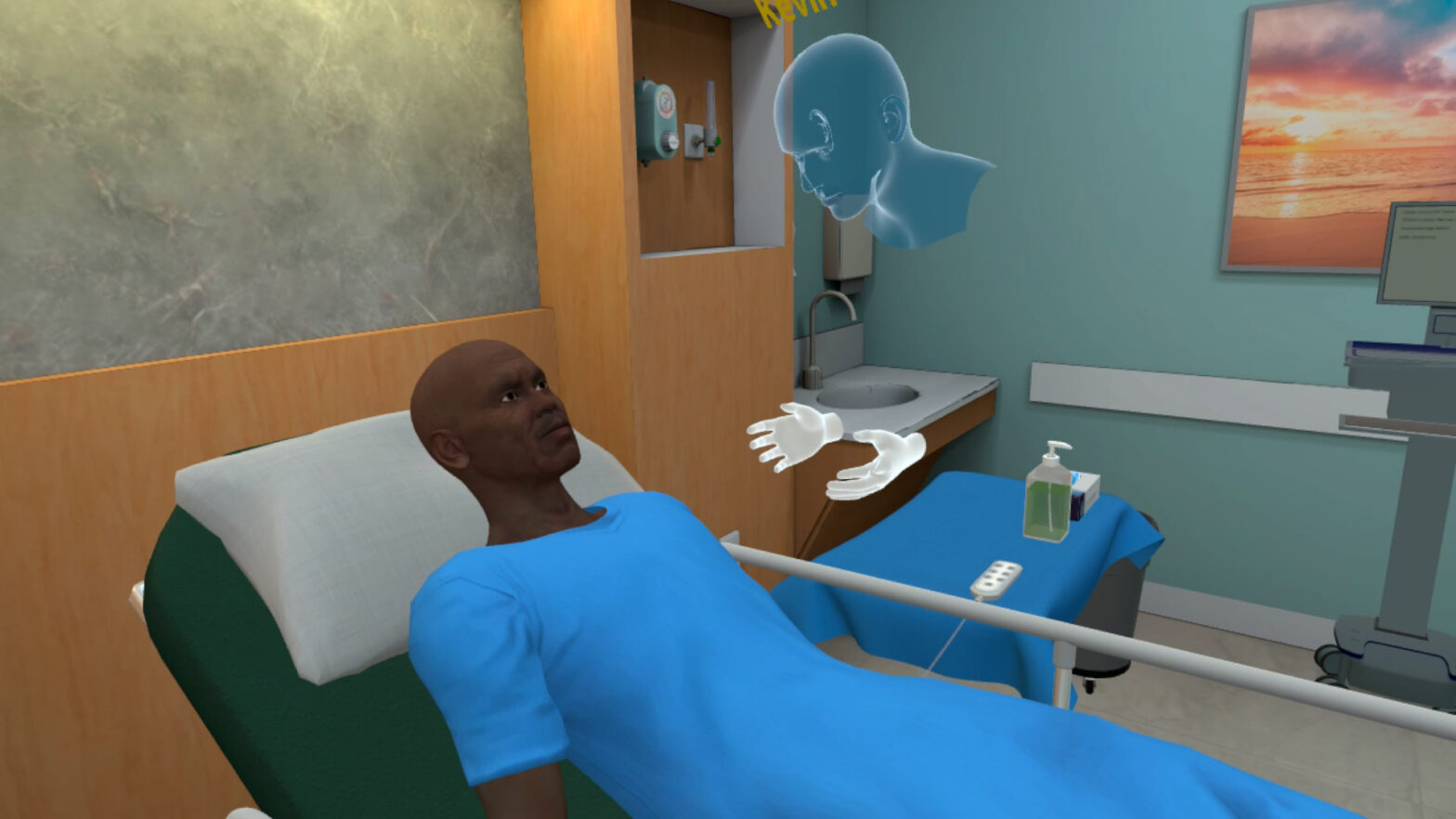
- American Lung Association. (n.d.). Pulmonary function tests (PFTs). Retrieved from https://www.lung.org/lung-health-diseases/lung-procedures-and-tests/pulmonary-function-tests
- Mayo Clinic. (2023). Pulmonary function tests. Retrieved from https://www.mayoclinic.org/tests-procedures/pulmonary-function-tests
Customize Your Program
Get rid of the editor. Adopt in-VR customization.
MedVR Education is bringing to you in-VR customization that will enable you to customize your procedural simulations by making selections from a range of feature choices.
- Select patient from a diverse background
- Choose preferred virtual environment
- Select equipment used in the procedure
- Modify difficulty level of the assessment mode
- …..many more to come
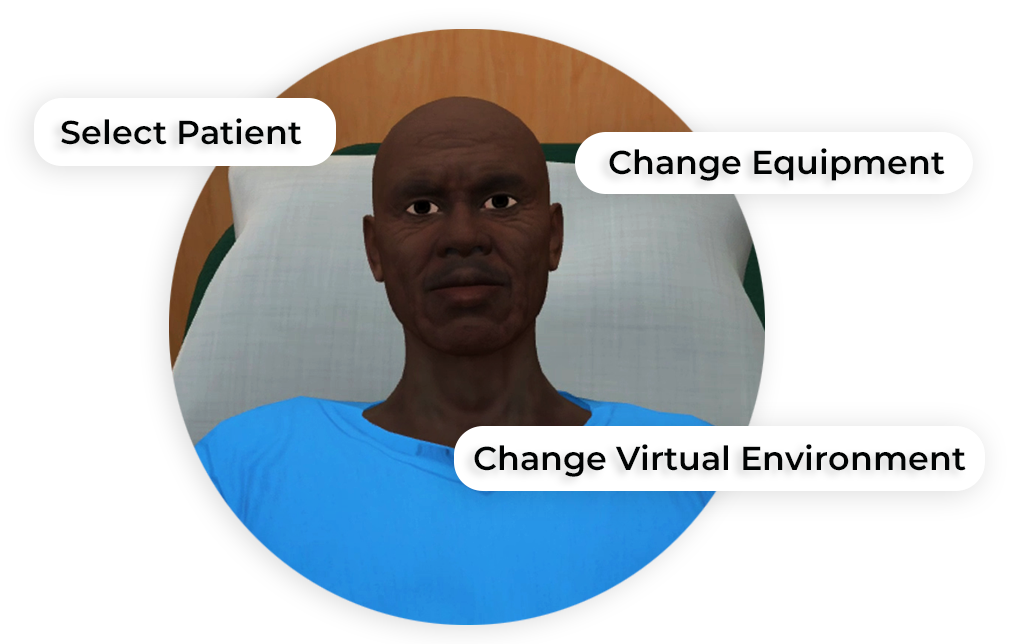
 Multi-playerSessions
Multi-playerSessions Physics-based Interactions
Physics-based Interactions
Core Skills Training
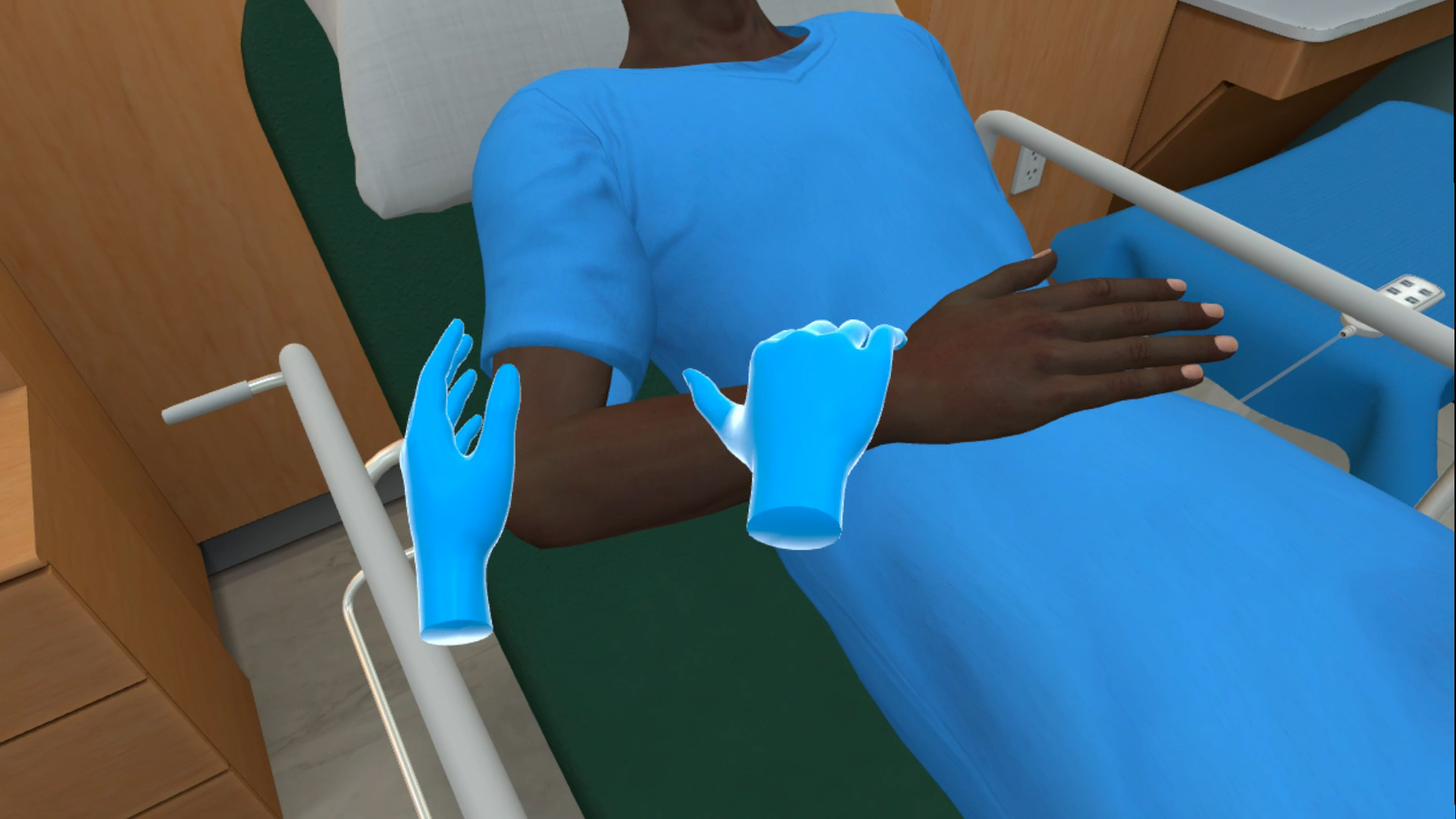
Assessing Respiratory Rate
As a part of this respiratory function assessment procedure, the user will begin by confirming the patient’s name and date of birth and enquiring about any known allergies. The learner will then ask the patient to provide the symptoms that led to his visit to the ER. The learner will inform the patient that they will be listening to the patient’s lungs. To do so the learner will don gloves and proceed to placing finger on patient’s radial artery. The learner will place the patient’s wrist on the patient’s abdomen and count respirations for 30 seconds a couple of times. All necessary affordances are provided to complete the procedure with efficiency.

Assessing Anterior and Posterior Lung Sounds
To assess the anterior and posterior lung sounds, the learner will begin by cleaning the diaphragm of the stethoscope. After informing the patient that the checkup can be paused if the patient feels any discomfort, the learner will proceed with the assessment. Using the bigger side of the stethoscope, the learner will place the diaphragm above the clavicle on the patient’s right side. Starting from the clavicle, the learner will listen to lung sounds all the way to the 7th IC space mid-axillary on both sides. To listen to the posterior lung sounds, the learner will ask the patient to sit in bed with their hands in their lap. Starting from C7 cervical vertebrae the learner will check on both sided, left and right upto the T9 Thoracic vertebrae.
Training
With prompts, guidance and affordances learners are hand-held through the process to practice the procedure in a virtual environment with a virtual patient.
- Photorealistic virtual environment
- Physics-based interactions
- Detailed instructions
- Adequate affordances to assist in task completion
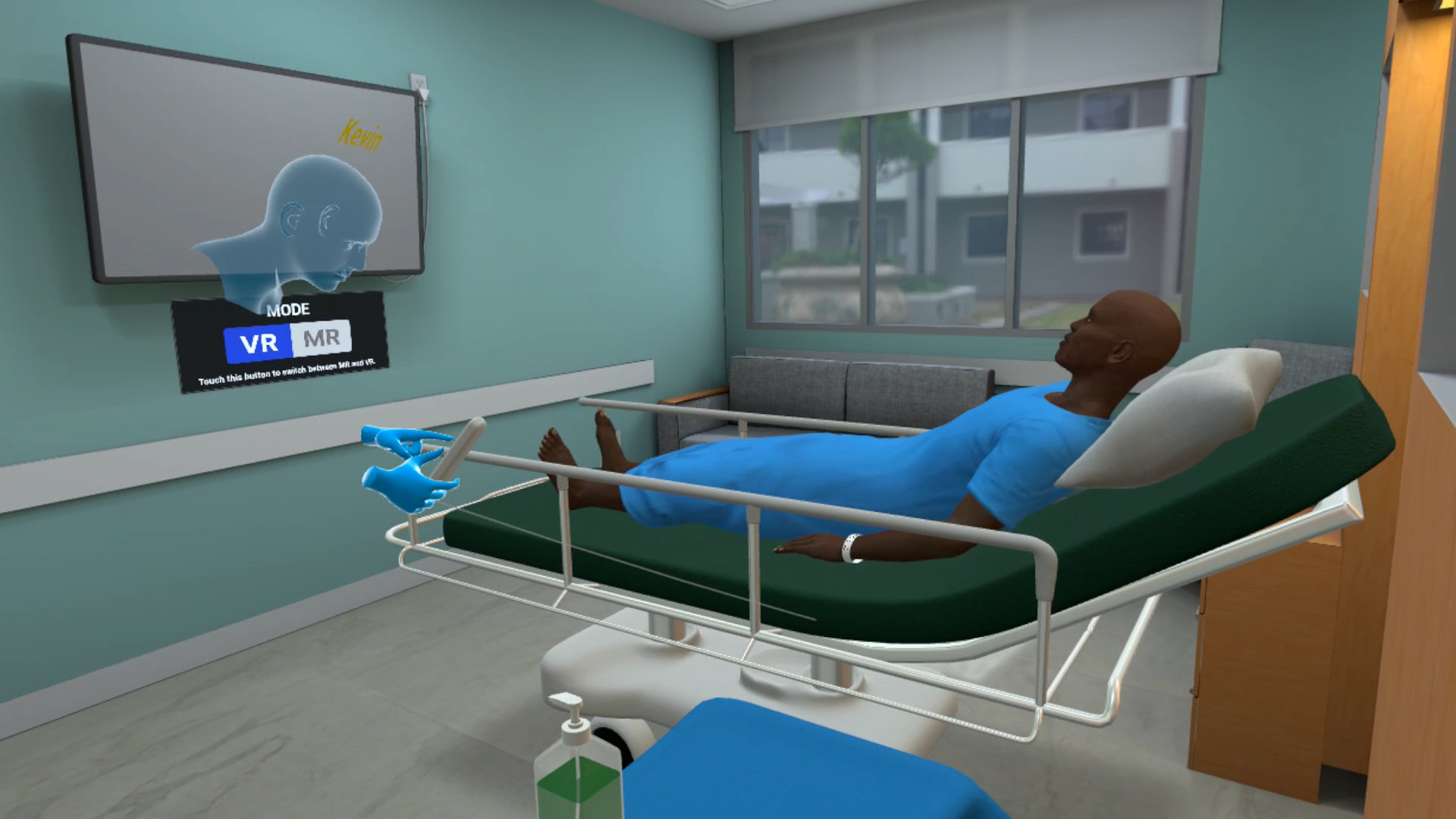
Assessment
Test acquired skills to perform the procedures from start to finish without prompts. An incorrect step will take the learner back to the start to start afresh.
- Live scoring
- Instant feedback
- Adequate affordances for efficient performance
- Time tracking to monitor activity completion
